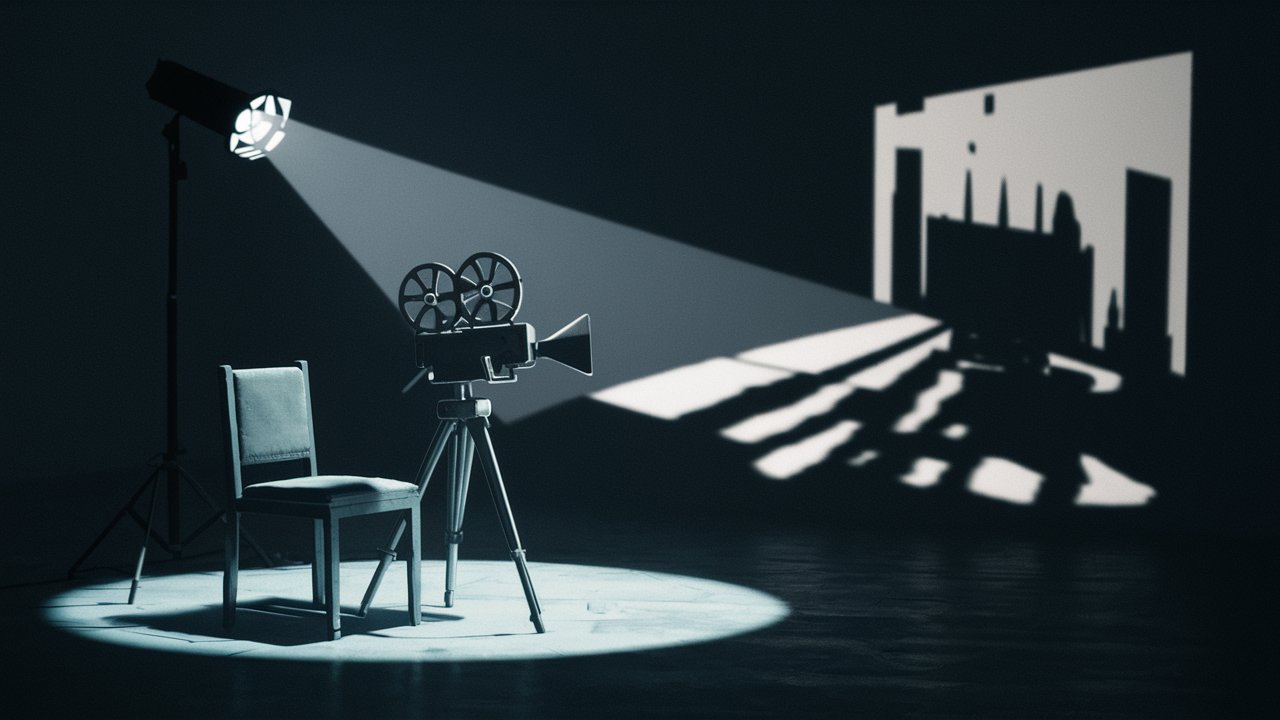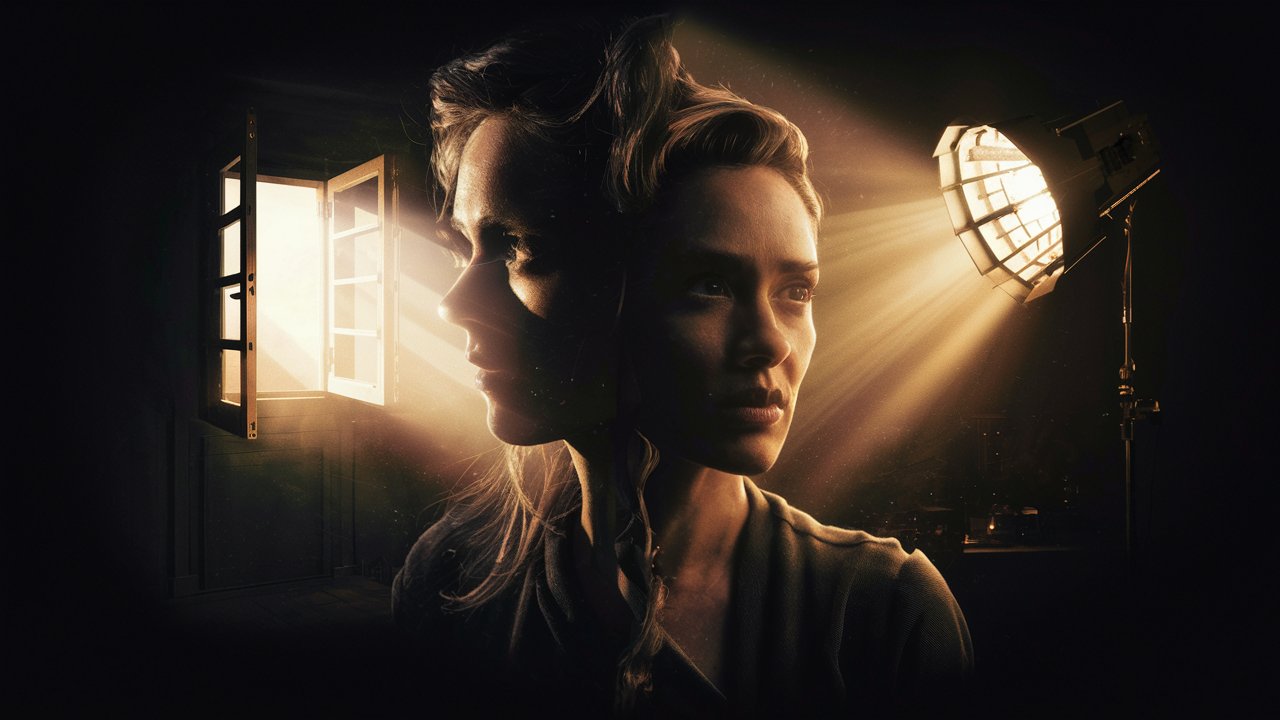In the realm of cinema, where shadows dance with light and emotions flicker like flames, there exists a silent artist – one often overlooked but never underappreciated: lighting. Imagine if the universe were a canvas, and each beam of light a brushstroke painting the mood of a film. This is the symphony of illumination that guides our perception, shaping raw scenes into poignant narratives that linger in our minds long after the credits roll.
With each flicker and dim, lighting holds the power to whisk viewers away on emotional odysseys. It is not merely an accessory in film production but a maestro conducting the orchestra of storytelling.
Crafting landscapes evocative enough to make hearts race or tears well up takes more than just fancy camera angles; it requires an intimate understanding of how light whispers secrets through its nuances, subtly influencing how we perceive characters, spaces, and time itself.
As viewers are swept into realms both real and imagined, they unknowingly succumb to the hypnotic enchantment spun by these luminous threads that weave around actors’ expressions and sets’ textures.
Illusions Through Illumination: Crafting Emotional Landscapes in Cinema.
In the realm of filmmaking, where every frame is a canvas of emotion waiting to be painted upon, lighting stands out as the masterful artist’s brush. Its strokes can create a mystifying atmosphere that tugs at heartstrings or instills fear in the bravest souls.
Consider a scene bathed in soft, golden hues reminiscent of a nostalgic summer afternoon; suddenly, warmth and familiarity flood your senses, embracing you in an emotional embrace crafted by light itself. By manipulating the intensity, color, and direction of light, filmmakers have the power to weave immersive tapestries of emotion that viewers can’t help but get lost in.

Beyond mere illumination, strategic lighting techniques serve as architects building visual depth within each frame. Shadows dance playfully beneath dimly lit alleyways or looming figures cloaked in mystery emerge from the chiaroscuro depths. Picture this: a solitary figure standing beneath a street lamp on a rain-soaked night.
The interplay of shadows and highlights not only adds layers to the scene but also hints at hidden truths waiting to be revealed. Every flicker of light shapes the composition like unspoken words etched into celluloid—a silent yet powerful storyteller.
Moreover, different types of lighting—whether basking scenes in natural sunlight’s warm embrace or casting characters under the harsh glares of artificial neon—hold within them narratives waiting to be unveiled.
The gentle glow filtering through leaves on a lazy afternoon may whisper tales of tranquility and pastoral beauty, while the harsh fluorescence buzzing overhead might forebode impending chaos or stark realities awaiting revelation.
Through these choices, filmmakers not only set the tone and mood but also guide audiences through landscapes both internal and external; emotions befriending imaginations amidst shades and luminescence alike.

Harnessing the Emotional Symphony of Light, Color Temperature, and Film MoodPicture a serene sun-kissed morning where hues of gold cascade over a tranquil landscape like liquid poetry. As filmmakers orchestrate their visual symphony, color temperature emerges as the maestro – conducting emotions with the deft strokes of warm and cool tones.
The rhapsody of golden yellows and fiery oranges infuses warmth into scenes, embracing characters in its tender glow. In contrast, the icy blues and steel grays evoke chilling isolation or melancholic introspection, creating an atmospheric dance that captivates viewers’ hearts.
Delve deeper, and you’ll unravel how color temperature becomes the whispered confidant of time itself within films. A scene bathed in warm twilight hues can transport audiences to a cozy evening embrace or a nostalgic summer sunset, while cool tones envelop characters in icy despair or foreboding mystery.

Like a skilled painter dabbing emotion onto a canvas with each brushstroke, filmmakers mold color temperatures to etch psychological states into their characters’ very souls for viewers to decipher.
Yet, it is in the delicate dance between contrasting color temperatures that cinematic magic truly blooms – juxtaposing warmth against coolness to weave dramatic tales that resonate deep within audiences.
Imagine the stark contrast between soft candlelit glows against moonlit shadows dancing upon faces – a chiaroscuro ballet painting tragedies with shades of gray and hope with vibrant bursts of light.
Filmmakers masterfully balance these contrasts to sculpt narratives that pulsate with intensity; every frame pregnant with unspoken tensions and revelations waiting to unfurl before our very eyes.
In the realm of cinematic artistry, shadows and highlights are not merely products of light but tools at the filmmaker’s disposal to manipulate emotions and perceptions. Shadows, those enigmatic silhouettes that dance across the screen, hold within themselves the power to add layers of intrigue and depth to film scenes.
They conceal as much as they reveal, hinting at hidden truths or imminent danger lurking beneath the surface. Think of a lone figure shrouded in darkness, their obscured features inviting speculation and curiosity, heightening suspense with every uncertain step they take through dimly lit alleyways.

On the other hand, highlights act as beacons guiding the viewer’s gaze toward crucial elements within a frame, shaping the focus and creating visual interest amidst a sea of shadows. A well-placed highlight can illuminate an actor’s tear-streaked face in a moment of vulnerability or emphasize the glint of discovery in a character’s eyes as they unravel a mystery.
These bursts of brightness punctuate scenes like exclamation marks in a sentence, drawing attention to moments that demand significance or revealing intricate details that might otherwise go unnoticed.
Furthermore, filmmakers can use shadow patterns not just for aesthetic purposes but also as potent symbols that subtly convey themes or signify character development throughout a narrative.
Imagine how shifting patterns of light and shadow mirror internal conflicts within characters – darkness encroaching upon light symbolizing descent into despair or flickering rays penetrating obscurity signifying moments of hope amidst adversity.
In this way, each interplay between shadow and light becomes a nuanced language speaking volumes to attentive viewers about the emotional landscapes traversed by protagonists on their cinematic journeys.

Crafting the mood in a film is akin to painting emotions with light, each hue and shadow chosen deliberately to elicit a specific reaction from the audience. In the realm of cinematography, where light reigns supreme as both puppeteer and poet, mastering various lighting techniques becomes essential in sculpting the desired ambiance.
To weave suspense and mystery into a scene, cinematographers often embrace low-key lighting setups—a dance between light and dark where shadows hold secrets, revealing mere glimpses of truth. Think of classic film noirs like “Double Indemnity,” where Venetian blinds cast haunting patterns on troubled faces, concealing the intentions of ill-fated characters.
Conversely, when seeking to evoke warmth and intimacy within a frame, soft light sources emerge as tender allies in the storytelling process. Soft light caresses actors’ features like whispered confessions, wrapping them in gentle luminosity that beckons viewers into emotional embraces.
Picture films like “Pride and Prejudice,” where romantic encounters are bathed in soft candlelight—an intimate interplay between characters made vulnerable by tender illumination. As if painting with poetry rather than pixels, filmmakers harness these delicate nuances to forge connections that resonate deeply within audiences’ hearts.

In contrast to the quiet intimacy of soft lighting lies the dynamic energy exuded by high-key setups—a bold proclamation that electrifies atmospheres with tension. High-key lighting operates like a crescendo in a symphony of visuals, elevating emotions to feverish heights through an abundance of brightness that leaves little room for hiding.
Consider movies such as “The Great Gatsby,” where opulent parties pulsate with vibrant high-key lighting, mirroring the extravagant decadence and underlying tensions bubbling beneath polished exteriors. In this grand spectacle of luminescence, every glare speaks volumes louder than words can muster—an eloquent testimony to the power wielded by light in orchestrating cinematic theatrics.
Harnessing Illumination: Crafting Cinematic Magic Through LightIn the dimly lit corners of classic films, where shadows dance with characters and highlights whisper untold stories, we find the soul-stirring essence of cinematic storytelling.
As we deconstruct pivotal scenes from legendary movies, a symphony of light unfolds before our eyes, painting emotions in hues that words alone cannot express. From the moody noir alleyways to the sun-kissed landscapes of epics, lighting emerges as the silent conductor orchestrating the audience’s emotional journey.

Through these cinematic masterpieces, we learn that every flicker of light is a brushstroke on the canvas of the viewer’s perception. Pioneering filmmakers wielded this tool with meticulous care, using it to sculpt moods and evoke reactions beyond mere visuals.
The interplay between shadow and light whispers secrets, heightens suspense, and transforms mundanity into magic. It’s not just about what is seen but how it makes one feel – a window into characters’ souls, a guide through narrative twists, an evocative force shaping film mood.
As we bid adieu to this enlightening exploration on the transformative power of illumination in cinema, let us remember that within every beam lies a universe waiting to be explored. Embrace the shadows, dance with highlights; experiment fearlessly as you embark on your filmmaking voyage.
For in mastering the art of light manipulation lies the key to unlocking untold realms of emotion and crafting narratives that resonate deeply with audiences. So go forth – illuminate your stories, sculpt your moments, and let light be your guiding star in shaping unforgettable cinematic experiences.

I am a highly experienced film and media person who has a great deal to offer to like-minded individuals. Currently working on several exciting projects, I am a film and media practitioner for over a decade. I have achieved a great deal of success in my professional career.





